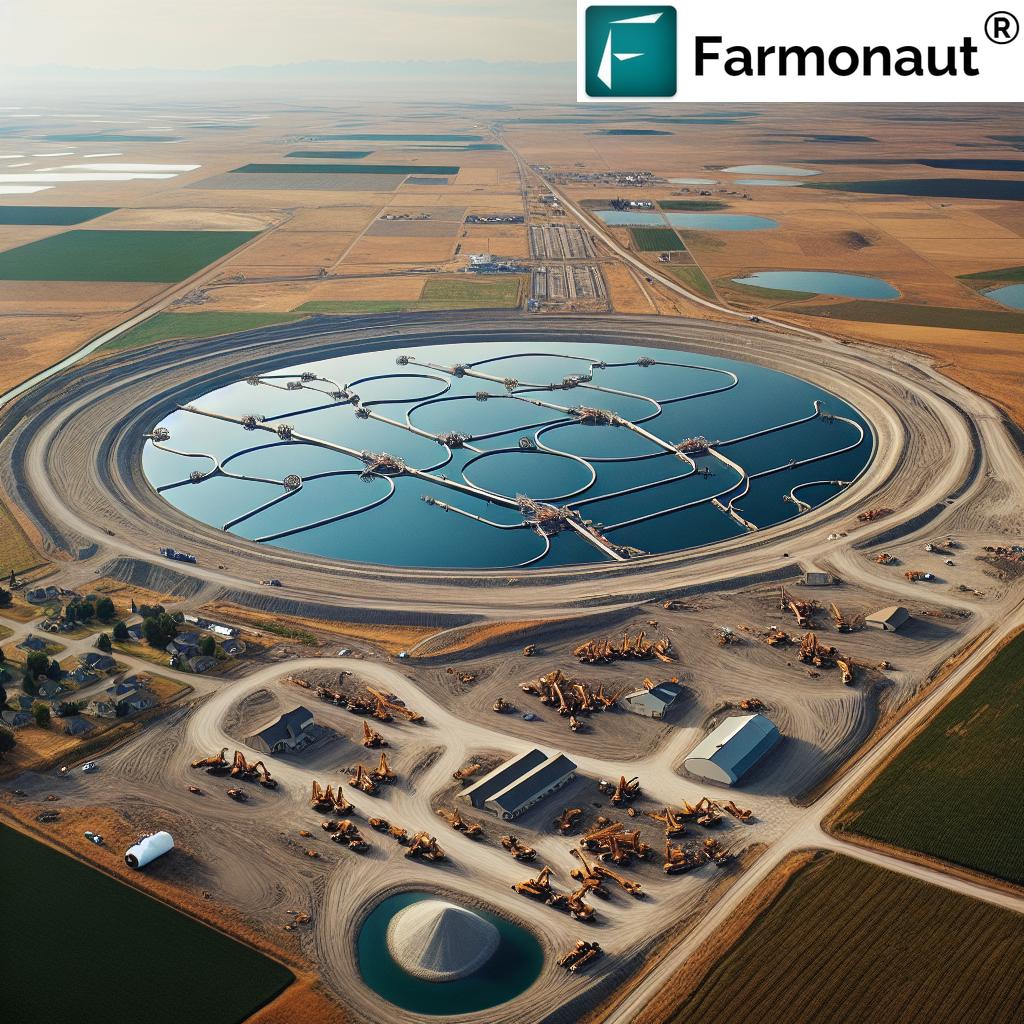Unlocking Blue Carbon: How Massachusetts Salt Marshes Combat Climate Change
“Massachusetts salt marshes store carbon equivalent to emissions from 10 million cars in just their top meter of soil.”
In the ongoing battle against climate change, we’re constantly searching for effective solutions to reduce greenhouse gas emissions and mitigate global warming. While much attention has been given to terrestrial carbon sinks like forests and grasslands, a powerful ally in this fight has been quietly working along our coastlines: salt marshes. These remarkable ecosystems are now emerging as crucial players in the realm of “blue carbon” – the carbon captured and stored by coastal and marine environments.
In this comprehensive exploration, we’ll delve into groundbreaking research that reveals the significant role of Massachusetts salt marshes in carbon sequestration and climate change mitigation. We’ll uncover how these tidal ecosystems continuously absorb carbon dioxide, outperforming their terrestrial counterparts, and why their preservation is vital for a sustainable future.
The Power of Salt Marshes as Carbon Sinks
Salt marshes are coastal wetlands that are flooded and drained by salt water brought in by the tides. These unique ecosystems are found in temperate and high-latitude regions around the world, including the Northeast coast of the United States. What makes them particularly interesting from a climate perspective is their remarkable ability to capture and store carbon.
Recent research conducted by scientists at the University of Massachusetts Amherst has shed new light on the carbon storage capabilities of salt marshes in the Northeast. Their findings are nothing short of astonishing:
- Salt marshes in Massachusetts store approximately 10 million cars’ worth of carbon in their top meter of soil.
- These marshes add roughly 15,000 additional cars’ worth of carbon every year.
To put this into perspective, let’s consider the following comparative table:
| Ecosystem Type | Estimated Annual Carbon Sequestration Rate (tons CO2/acre/year) | Total Carbon Storage Capacity (tons CO2/acre) |
|---|---|---|
| Salt Marshes | 6-8 | 500-1000 |
| Forests | 2-4 | 200-300 |
| Grasslands | 0.5-1.5 | 100-200 |
Note: Values are estimates based on current research and may vary depending on specific conditions and locations.
As we can see, salt marshes significantly outperform both forests and grasslands in terms of annual carbon sequestration and total storage capacity. This makes them incredibly valuable assets in our fight against climate change.
The Unique Properties of Salt Marshes
What makes salt marshes such effective carbon sinks? The answer lies in their unique ecological properties:
- Continuous Accumulation: Unlike terrestrial ecosystems that may reach a carbon storage plateau, salt marshes can continuously increase their carbon storage capacity. As Wenxiu Teng, lead author of the UMass Amherst study, explains, “The amazing thing about tidal marshes, from a climate perspective, is that they can continuously increase their carbon storage. They don’t fill up.”
- Sediment Trapping: Salt marshes are expert sediment trappers. With each tide and storm, new layers of carbon-rich sediment are deposited among the thick salt marsh grasses. This process allows for ongoing carbon sequestration.
- Vertical Growth: As sea levels rise due to melting glaciers, salt marshes grow vertically to keep pace. This adaptation not only helps them survive but also increases their carbon storage capacity over time.
- Anaerobic Conditions: The waterlogged soils of salt marshes create anaerobic (oxygen-free) conditions that slow down decomposition. This means that carbon stored in marsh soils can remain locked away for centuries or even millennia.
“Salt marshes outperform forests and grasslands in continuously absorbing carbon dioxide, making them superior carbon sinks.”
Measuring Blue Carbon: Innovative Techniques
One of the challenges in quantifying the carbon storage potential of salt marshes has been developing accurate measurement techniques. The UMass Amherst team has made significant strides in this area, combining satellite imagery with field sampling to create a highly accurate method for estimating blue carbon storage.
Here’s how their innovative approach works:
- Satellite Imagery: The team used the Normalized Difference Water Index (NDWI) from satellite data to analyze spatial patterns of water depth and vegetative vigor across salt marshes.
- Field Sampling: They collected 410 soil samples from 19 sites ranging from Long Island Sound to the Gulf of Maine, representing various locations within each salt marsh.
- Data Correlation: By comparing satellite NDWI data from multiple seasons and tidal levels with their field samples, the researchers identified specific conditions where satellite data closely matched field measurements.
- Optimal Imaging Conditions: The team discovered that satellite images captured during high tide inundation provided the most reliable data for carbon estimation.
This method allows for a more comprehensive and cost-effective way to estimate blue carbon storage across large areas of coastline, providing valuable data for policymakers and conservationists.
The Importance of Salt Marsh Preservation
While the carbon storage potential of salt marshes is impressive, it’s crucial to understand that these ecosystems are also vulnerable. If disturbed or degraded, salt marshes could release their stored carbon back into the atmosphere, potentially exacerbating climate change rather than mitigating it.
Brian Yellen, Massachusetts’s state geologist and research assistant professor at UMass Amherst, warns: “If salt marshes were to degrade due to the combined threats of local environmental stressors and global climate change, they would become huge sources of carbon emissions.”
This underscores the critical importance of salt marsh preservation and restoration efforts. By protecting these valuable ecosystems, we can:
- Maintain and enhance natural carbon sinks
- Prevent the release of stored carbon
- Preserve biodiversity and important habitats
- Protect coastlines from erosion and storm surges
- Support local fisheries and economies
The Role of Technology in Salt Marsh Conservation
As we work to protect and restore salt marshes, technology plays a crucial role in monitoring and managing these ecosystems. Companies like Farmonaut are at the forefront of developing innovative solutions that can be applied to coastal management and conservation efforts.
While Farmonaut primarily focuses on agricultural applications, its satellite-based monitoring and AI-driven analytics could potentially be adapted for salt marsh management. Here are some ways technology could contribute to salt marsh conservation:
- Remote Monitoring: Satellite imagery can be used to track changes in salt marsh extent and health over time, allowing for early detection of degradation or disturbance.
- Carbon Stock Estimation: Advanced algorithms could be developed to estimate carbon stocks in salt marshes based on vegetation indices and other remote sensing data.
- Restoration Planning: GIS and remote sensing tools can help identify optimal areas for salt marsh restoration or creation.
- Climate Impact Assessment: By integrating climate models with salt marsh data, we can better predict how these ecosystems might respond to future climate scenarios.
While Farmonaut’s current focus is on agricultural applications, the principles behind their technology could inspire similar innovations in coastal ecosystem management. For those interested in exploring Farmonaut’s agricultural solutions, you can check out their web app, Android app, or iOS app.
The Future of Blue Carbon Research and Conservation
The groundbreaking work on Massachusetts salt marshes is just the beginning of our understanding of blue carbon ecosystems. As we continue to refine our measurement techniques and expand our knowledge, several key areas of focus emerge:
- Global Mapping: Extending the methodology developed for Northeast salt marshes to other coastal regions around the world.
- Long-term Monitoring: Establishing long-term monitoring programs to track changes in carbon storage over time and in response to climate change.
- Restoration Science: Developing best practices for salt marsh restoration and creation to maximize carbon sequestration potential.
- Policy Development: Creating policies and incentives to protect and restore salt marshes as part of climate change mitigation strategies.
- Public Education: Raising awareness about the importance of salt marshes and other blue carbon ecosystems in combating climate change.
Conclusion: The Blue Carbon Revolution
The discovery of salt marshes’ remarkable carbon storage capabilities marks a significant milestone in our understanding of natural climate solutions. These coastal ecosystems, often overlooked in the past, are now emerging as powerful allies in our fight against climate change.
As we continue to grapple with the challenges of a warming world, it’s clear that protecting and restoring salt marshes must be a priority. By combining cutting-edge research, innovative technologies, and smart conservation policies, we can harness the full potential of these blue carbon powerhouses.
The story of Massachusetts salt marshes serves as a compelling reminder of nature’s capacity to help us address global challenges. It underscores the importance of preserving and studying our natural ecosystems, as they may hold solutions we’ve yet to fully appreciate.
As we move forward, let’s remember that every acre of salt marsh protected or restored is not just a win for local ecosystems and coastal communities – it’s a significant step towards a more sustainable and climate-resilient future for us all.
FAQs
- What is blue carbon?
Blue carbon refers to the carbon captured and stored by coastal and marine ecosystems, including salt marshes, mangroves, and seagrass meadows. - How do salt marshes compare to forests in terms of carbon storage?
Salt marshes can store significantly more carbon per acre than forests and can continue accumulating carbon indefinitely, unlike forests which may reach a storage plateau. - Why are salt marshes effective at storing carbon?
Salt marshes are effective carbon sinks due to their ability to trap sediment, grow vertically with sea-level rise, and create anaerobic conditions that slow decomposition. - What threats do salt marshes face?
Salt marshes are threatened by sea-level rise, coastal development, pollution, and changes in sediment supply. - How can we protect salt marshes?
Protecting salt marshes involves conservation efforts, restoration projects, reducing coastal pollution, and implementing policies that recognize their ecological and climate value.
By understanding and valuing the critical role of salt marshes in carbon sequestration, we can take significant steps towards mitigating climate change and protecting our coastal ecosystems for future generations.













